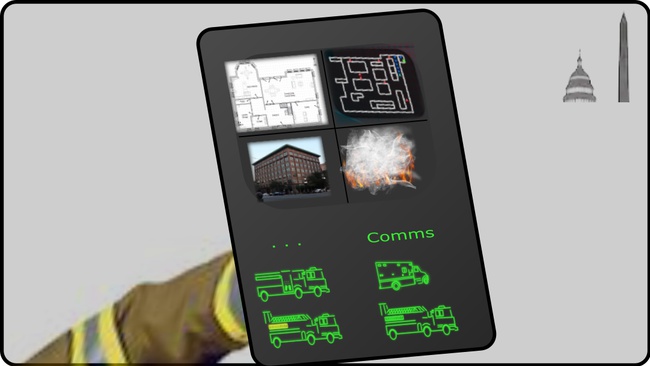
Realtime situational awareness could enable incident commanders to quickly assess emergency scenes and assign valuable manpower to critical locations and roles. 5G networking could allow information from cameras, architectural plans, and IoT sensors to be used en route and on-scene, as well as providing a real-time datalink between all responders.
D.C. first responders constantly protect the community in emergency situations, enduring long hours, dangerous circumstances - and a fleet of aging fire and EMS vehicles. While material solutions are underway to refresh the fleet of emergency vehicles, technological innovations may be able to lessen the toll on first responders. Early information on vehicle requirements in emergencies could both shorten response times and effectively allocate reserve vehicles where they are most needed. Decentralized tracking of vehicle status and known issues could help prevent injuries, improve vehicle utilization, and assist maintainers in tracking and prioritizing repairs.
Gigabit networking technologies represent a hardware enabler, supporting extremely high speed/low latency communication in a cost-effective manner. mmWave mobile devices also offer the potential to provide accurate indoor positioning. Together, high-speed data and precise positioning can provide a clear situational picture of an ongoing emergency operation.